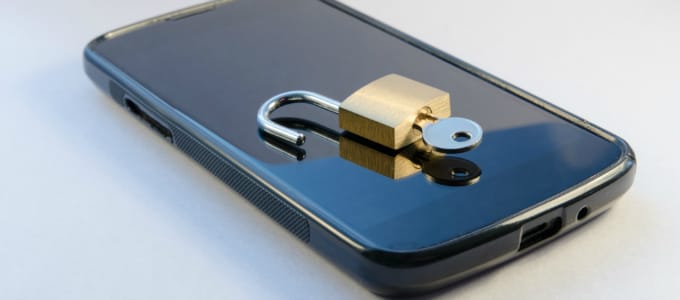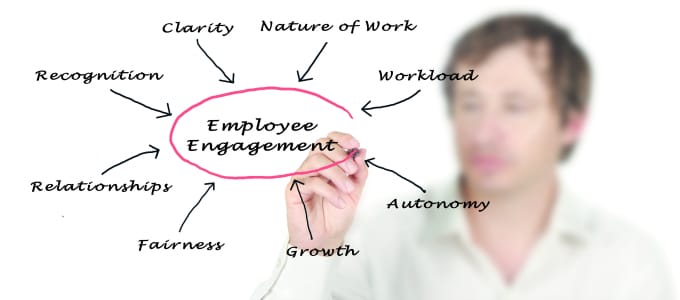 It all started with a doughnut.
It all started with a doughnut.
For PR firm Walker Sands Communications, that round, sometimes frosted dessert didn’t just pack a lot of cream — it packed a lot of punch as well.
Mike Santoro, president of Walker Sands, wanted to learn how news traveled across his company. He turned his head toward the regular internal employee newsletter, wondering if it was an effective communication tool.
“When you’re a small company, it’s easy to spread the word. You stand up in the middle of the floor and yell, ‘Attention!’ As we’ve grown, it’s definitely been more challenging,” Santoro said. “We wanted to do an actual experiment to find out how they [employees] behave.”
Then, he thought about that popular breakfast treat. Santoro said he thought to himself, “What can we do with doughnuts?”
Besides making Homer Simpson the happiest man in the world?
At 9 a.m. on a Friday, two different versions of the same e-newsletter went out. One read, “Donuts in the Conference Room” at the top; the second placed the same phrase toward the bottom. By 10:30 a.m., 91 percent of the newsletter’s recipients were aware of the information but in a way that interested Santoro. Nearly half of the employees in the conference room had heard about the pastries from a source other than the newsletter. Santoro learned that the office newsletter is only slightly better than word of mouth — and that word of mouth only travels so far.
Walker Sands’ recent study raises an interesting question about effective perks and benefits communication strategies, which can be just as tricky and sticky as the icing on that pastry. How can employers effectively spread the word?
“Today’s employee and the ways of communicating have changed,” Santoro said. “It used to be, you could do direct mail, face-to-face. You could do phone calls. Now, people are consuming information” through many different kinds of outlets.
“As much as you can, communicate with pictures and video,” Santoro said. “That’s really important to be able to tell that story.”
Social media sites, Santoro said, are great methods of doing just that.
“Our own employees tend to be younger people,” he said, “who tend to communicate across Snapchat, Facebook, Instagram.”
But just because the digital age provides more communication tools, Santoro said the traditional in-person meetings should not be overlooked.
“We have quarterly meetings; we have monthly town halls where we gather everyone in the company together and tell them: ‘This is what’s most important for the month.’ Then you have these other secondary mechanisms, like the newsletter and active social channel,” Santoro said.
But communicating those perks and benefits doesn’t always have to revolve around “Who’s bringing the doughnuts?” David Daskal has also seen some unique strategies as director of business development at The Jellyvision Lab Inc., a business that creates interactive software to help employees learn about workplace benefits.
“Being human means you also have the freedom to have a little fun,” Daskal said. “Engaging posters and fliers in the break room, a raffle for everyone who participates in a benefits webinar. We’ve even worked with HR teams who have dressed up in costumes to help promote open enrollment.”
Sarah Foster is an editorial intern at Workforce. Comment below or email at editors@workforce.com. Follow Workforce on Twitter at @workforcenews.



 I recently had lunch with a dear friend and colleague who used to be my mentee in a former role. We celebrated his recent professional success, caught him up on mine, and explored next steps after he completes his master’s in public health. The topic of race came up a few times — he is a Canadian-born, African American of Nigerian parents — and turned to the matter of “acting white.” My friend, whom I’ll call Nick, decried the number of times he’s been told by other people of color he’s “acting white” for speaking the way he does. He expressed his offense at the bigoted notion that speaking in such an “intelligent, articulate, educated” way is viewed as exclusively white, and not a feature of black culture as well.
I recently had lunch with a dear friend and colleague who used to be my mentee in a former role. We celebrated his recent professional success, caught him up on mine, and explored next steps after he completes his master’s in public health. The topic of race came up a few times — he is a Canadian-born, African American of Nigerian parents — and turned to the matter of “acting white.” My friend, whom I’ll call Nick, decried the number of times he’s been told by other people of color he’s “acting white” for speaking the way he does. He expressed his offense at the bigoted notion that speaking in such an “intelligent, articulate, educated” way is viewed as exclusively white, and not a feature of black culture as well.